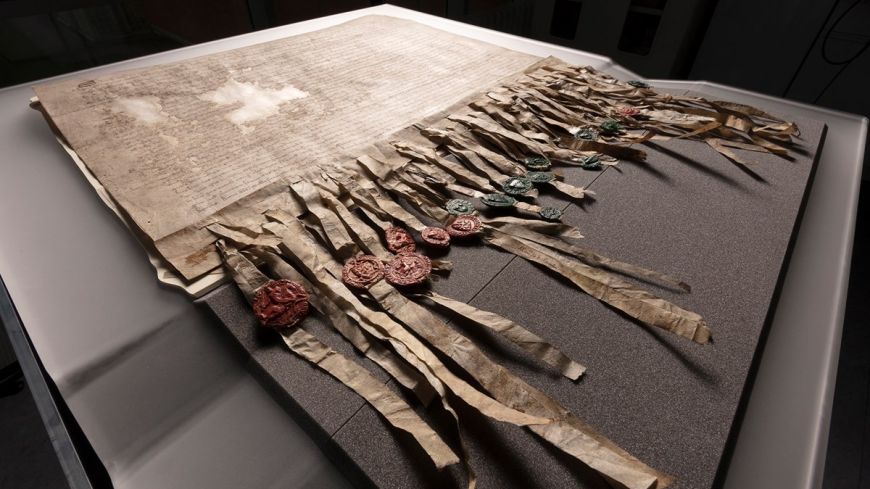
Students will know about the Declaration of Arbroath from school history lessons. From this weekend til 2 July 2023 they can see the famous and fragile 700+ year old document at the National Museum of Scotland. It was last displayed at the Scottish Parliament 18 years ago.
In spite of its age and wear, the Declaration continues to hold deep and symbolic importance as an early statement of Scottish independence from England. The document's curator National Records of Scotland only allows it to be displayed on rare occasions in order to ensure its long-term preservation. The document looks like it would disintegrate if you tried to pick it up, and due to its vulnerability its exposure to light has to be minimised.
It was due to be displayed in April 2020 to coincide with its 700th anniversary, but this was postponed due to the pandemic.
Papal approval
The Declaration of Arbroath is a letter dated 6 April 1320, written by the barons and freeholders of Scotland, on behalf of the Kingdom of Scotland, to Pope John XXII asking him to recognise Scotland's independence and acknowledge Robert the Bruce as the country's lawful king.
The letter also asks the Pontiff to persuade King Edward II of England to end hostilities against the Scots, so that their energy may be better used to secure the frontiers of Christendom.
The Declaration was probably drafted at a meeting of the King and his council at Newbattle, then written up in the scriptorium of Arbroath Abbey.
Written in Latin, Declaratio Arbroathis was sealed by eight earls and about 40 barons. It was authenticated by seals, as documents at that time were not signed, of which only 19 seals now remain.
It was written during the long Wars of Independence with England when, despite the Scots’ success at the Battle of Bannockburn in 1314, Robert I had not been recognised as king by either Edward II or by the Pope, and had been excommunicated by the latter.
At this time, the Pope desired peace between England and Scotland, so both could help in a crusade to the Holy Land. The Declaration sought to influence him by offering the possibility of support from the Scots for his long-desired crusade if they no longer had to fear English invasion.
After receiving the Declaration, the Pope urged reconciliation between the warring sides and a truce was agreed in 1323. A peace treaty was signed between England and Scotland in March 1328 and the following year the Pope issued a papal bull permitting the anointing and crowning of a King of Scots. The peace was short-lived, however, as the Second War of Independence broke out in 1332 and went on for 25 years.

